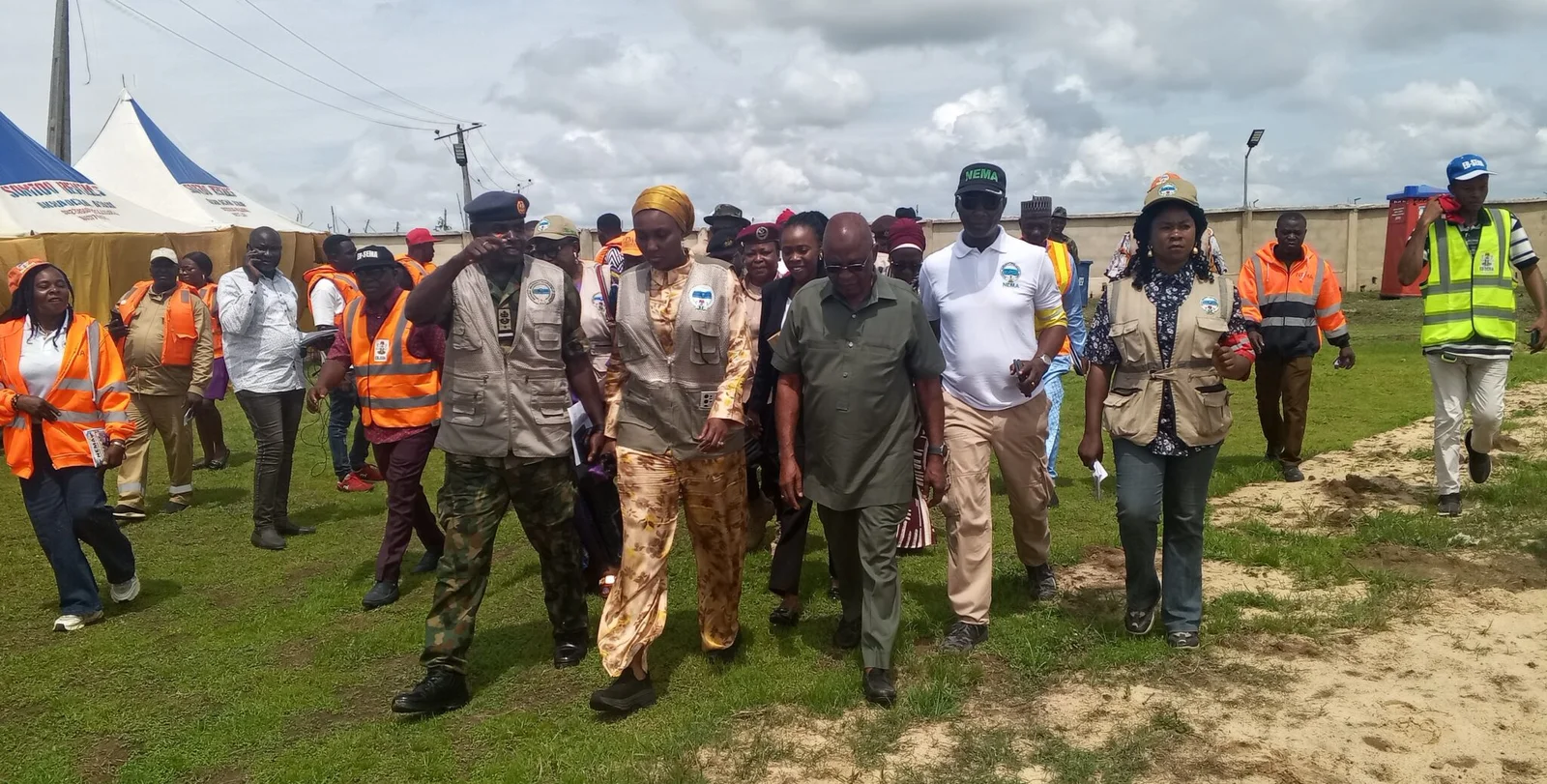Ogbaru, Anambra – June 23, 2025 – In a strategic effort to bolster flood preparedness and emergency response capabilities, a full-scale flood disaster response simulation exercise was successfully conducted at the Naval Base Odekpe in Ogbaru Local Government Area, Anambra State.
The simulation exercise, organised by the National Emergency Management Agency (NEMA), brought together a cross-section of security agencies, emergency responders, and key government officials to assess and strengthen coordinated disaster mitigation strategies.
The event marked the culmination of a multi-agency preparedness initiative aimed at enhancing readiness for potential flood incidents, particularly in flood-prone communities across Anambra State. The comprehensive drill demonstrated best practices in evacuation procedures, inter-agency coordination, medical response, and crisis communication during flood emergencies.
The Sector Commander of the Federal Road Safety Corps (FRSC) RS 5.3 Anambra Sector Command, represented by CRC Ihedioha C. Ezeala, Sector Monitoring and Evaluation Officer, participated in the event, reaffirming the Corps’ commitment to saving lives during emergencies.
The Director-General of NEMA, who led the exercise, commended participating agencies for their synergy and professionalism. He emphasised the importance of proactive measures and collaborative action in mitigating the impact of natural disasters. According to him, the simulation reflects Nigeria’s growing capacity to handle climate-induced emergencies with efficiency and resilience.
Anambra State Governor, Prof. Chukwuma Soludo, was represented at the event by Mr. Paul Odenigbo, who delivered a goodwill message on behalf of the State Government. He applauded NEMA’s efforts and reiterated his administration’s commitment to community safety and disaster risk reduction.
Also present were senior naval officers from the South East region, as well as the Executive Secretary of the South East Multi-Agency Emergency Response Committee, who lauded the collaboration as a model for national emergency preparedness.
The successful execution of the flood simulation exercise marks a crucial step in disaster readiness, reinforcing the need for continuous training, community sensitisation, and robust institutional coordination to protect lives and property in high-risk areas.







